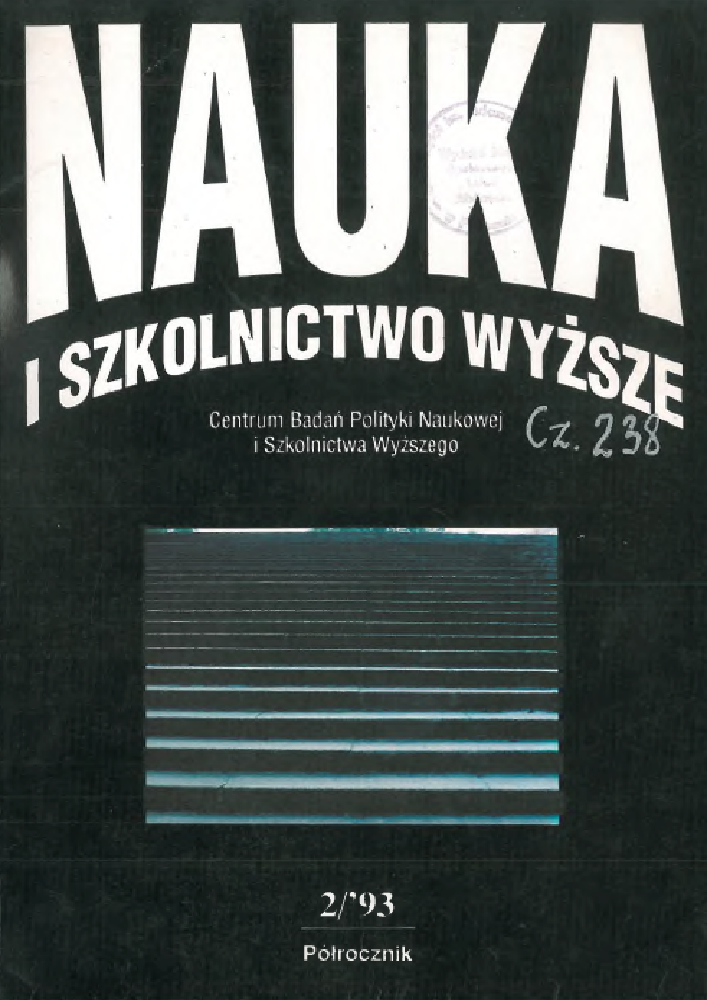Abstrakt
W artykule podjęty został problem drożności systemu edukacji i perspektyw osiągnięcia wewnętrznej integracji w warunkach autonomii uczelni, a także intensywnego rozwoju różnych form dotychczas niedrożnego nurtu kształcenia pomaturalnego. Szkolnictwo wyższe staje obecnie wobec problemu reorientacji poglądów młodzieży na jakość matury. Znacznie szersze niż dotychczas preferowanie szkoły średniej zawodowej, jak również szkolnictwa pomaturalnego sektora państwowego i niepaństwowego, skłania ku przypuszczeniu, że w ciągu najbliższych lat może ulec poważnym zmianom baza rekrutacyjna do studiów wyższych. Autorka artykułu prezentuje rezultaty badań pilotażowych, przeprowadzonych wśród słuchaczy III roku uniwersyteckich i kuratoryjnych kolegiów językowych. Zaprezentowany materiał empiryczny wskazuje, iż objęta badaniami młodzież traktuje w większości przypadków studia w kolegium jako etap nauki w drodze do dyplomu uniwersyteckiego. Z badań wynika również, że proces dywersyfikacji poziomu studiów i dyplomów akademickich, który rozpoczął się przed kilkoma laty, jest przede wszystkim podporządkowany wewnętrznym potrzebom instytucji wyższego wykształcenia, nie zaś reakcją na zewnętrzne potrzeby (rynek pracy, różnicowanie się poziomu i jakości wykształcenia przyszłych kandydatów na studia itp.). W konkluzji autorka stwierdza, że konsekwencją tendencji do zamykania drogi do studiów absolwentom szkół pomaturalnych, jaką wykazuje szkolnictwo wyższe w odniesieniu do absolwentów kolegiów kuratoryjnych, może być rozpoczynanie każdego etapu kształcenia od egzaminu wstępnego na I rok. Nie wydaje się to być inicjatywą
Bibliografia
Białecki I., Najduchowska H., 1992 „Informacje o pochodzeniu społecznym studentów I roku politechnik, WSP, akademii rolniczych, ekonomicznych i medycznych” (badania CBPNiSzW).
Bourdieu P., Passeron J.C. 1990 Reprodukcja. Elementy teorii systemu nauczania. Warszawa: PWN.
Cerych L., Sabatier P. 1986 Great Expectations and Mbced Performance. The Implementation of Higher Education Reforms in Europe. Trentham: Europeanlnstitute of Education and Social Policy.
Higher Education..., 1991 Higher Education: A NewFramework. White Paper 5 (presented to Parliament). London.
Najduchowska H. 1992 „Sprawozdanie z badań nad rekrutacją na studia w roku akademickim 1992/93” (raport CBPNiSzW).
Neave G., Vught F.A. van (ed.) 1991 Prometheus Bound. The Changing Relationship between Government and Higher Education in Western Europe. London: Pergamon Press.
Osiński J. 1977 Uwarunkowania społeczno-przestrzenne selekcji młodzieży do studiów wyższych. Warszawa: PWN.
Osiński J. (red.) 1985 Dobór młodzieży na stacjonarne studia wyższe. Warszawa: PWN.
Uchwała... 1991 „Uchwała Rady Głównej Szkolnictwa Wyższego z dnia 28 listopada 1991 r. w sprawie określenia warunków, jakim powinna odpowiadać uczelnia, aby utworzyć i prowadzić kierunek studiów”.
Vught F.A. van (ed.) 1989 Governmental Strategies and Innovation in Higher Education. Higher Education Policy Series 7. London: Jessica Kingsley Publ.
Wójcicka M. 1993 Skutki reform systemów edukacyjnych (na przykładzie wybranych krajów). „Nauka i Szkolnictwo Wyższe”, nr 1.
